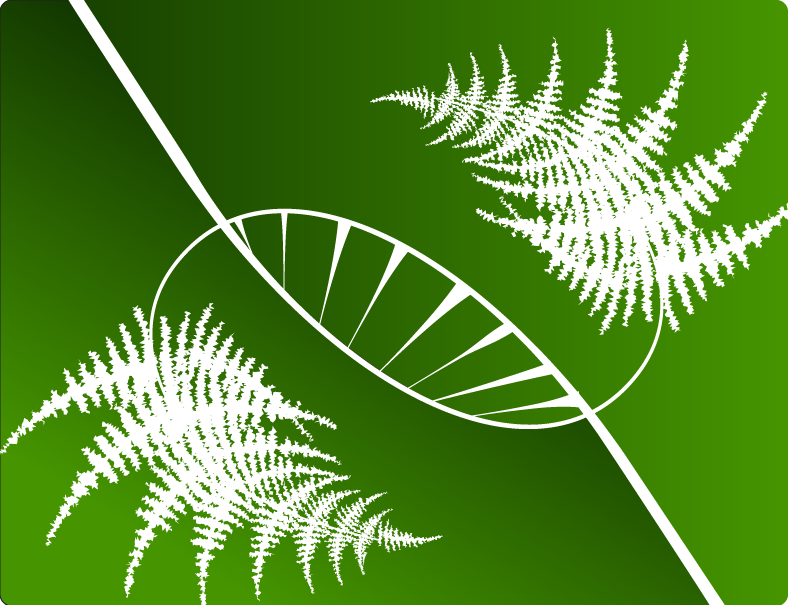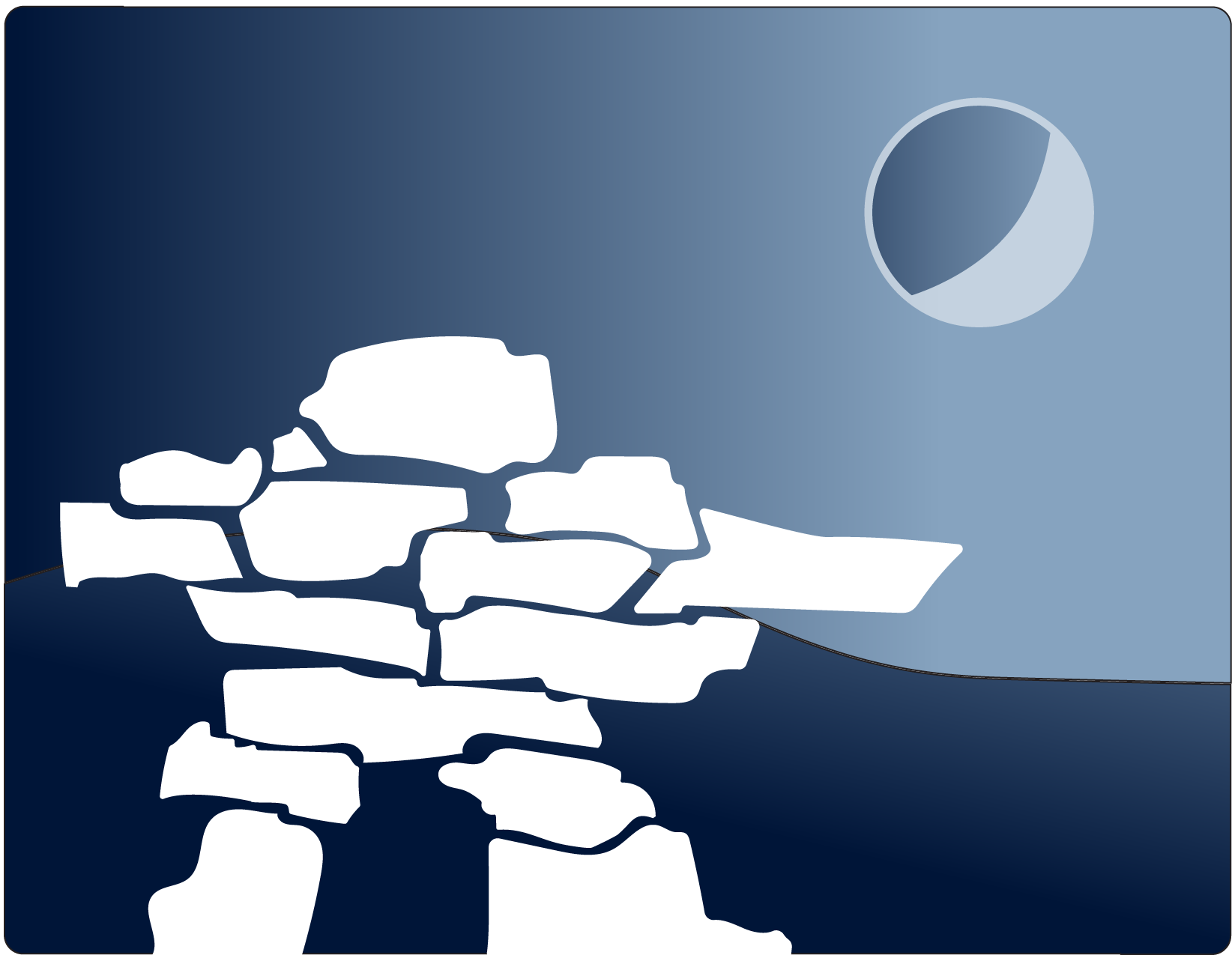
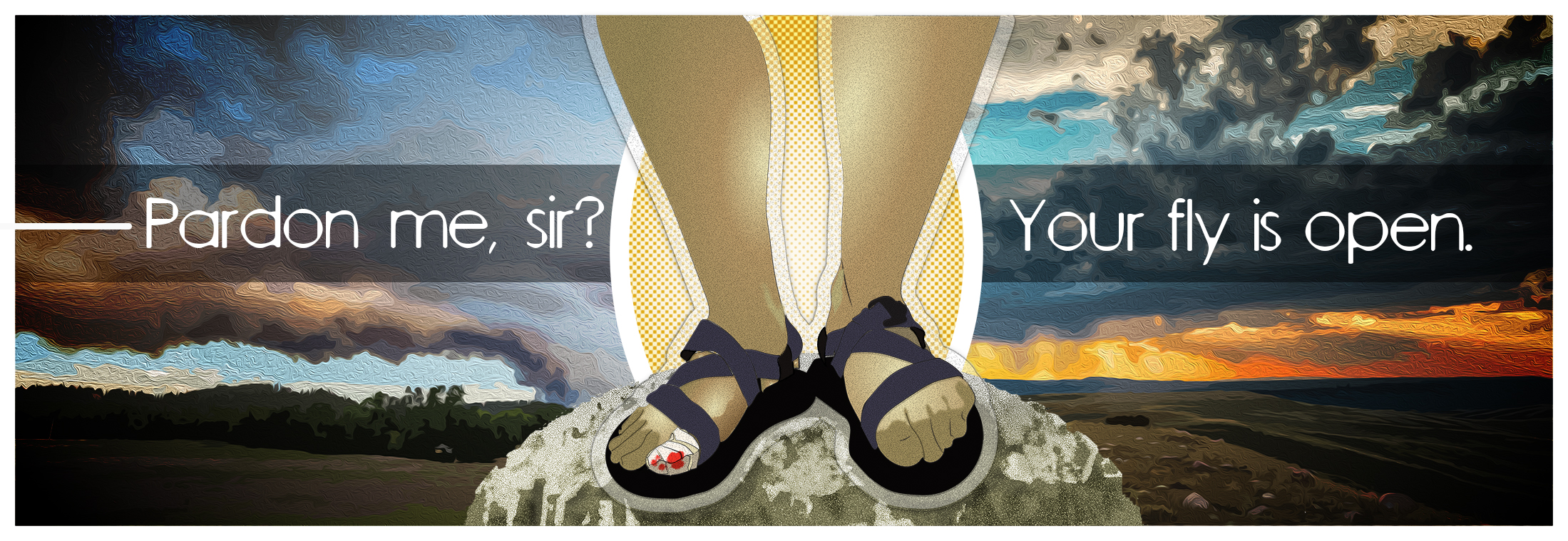
I limped back toward our campsite in the Campbell Creek Campground in the Medicine Bow National Forest, the blood pooling stickily under my toes and dripping off the sides of my sandal. “Hon?” I yelled as I approached, “I’m back a little early. Um... Could you get the first aid kit from the car?” Sue looked at me, at my foot, and then quickly glanced away. She dug through the top pocket of my backpack and brought me the bright red nylon pouch. She handed it to me without looking at my wound. “This is why I couldn’t be a doctor,” she said quietly.
I sat on a wet rock by the creek. I hadn’t intended to sit on a wet rock, it was just the way things ended up. I intended to hop over the little three foot wide stream and continue exploring the area around our national forest campground. Instead I slipped, and as my foot shot forward into the creek bed, it wedged beneath a rock under the water. I was wearing sandals because I hadn’t intended to walk very far from camp. As I pulled my foot out I could see blood leaving a crimson trail in the otherwise crystal clear water. I looked at the tip of my big toe and could see that the impact had split it open like a melon. Before the pain set in, all I could think was: “It’s about time.”
It WAS about time. I’d been waiting for this, neither because I like pain, nor did I feel the need to test my first aid skills. It was about time because something like this happens on all my trips. Some minor catastrophe occurs that will make for a great story... later. Most of the time it occurs when I’m hiking solo, but this time it was during the annual Big Summer Trip with my wife, Sue. We decided to make a road trip to visit as much of Wyoming as possible in three weeks.
Three weeks is almost a month, and a long time for something to go wrong.
So, as I sat on the wet rock, staring at my damaged digit, my relief was almost palpable. All of my major hiking, including an overnight sojourn into the spectacular Cloud Peak Wilderness in the Bighorn Mountains, had been completed. From this point on it was short day hikes and driving tours. We had dodged the bullet, the shoe had dropped, and the damage was minimal. Little did I know that a footwear fusillade was on its way.
With my toe bandaged up, we decided to spend the day driving the long rough road through a mixture of National Forest, privately held pasture, and land trust areas. The area alternated between evergreen forests and open sage, with the occasional massive rock formation thrown in. The rock formations were the type in which a small boy growing up in the seventies would love to play cowboy. I imagined sitting up in those rocks, hidden from sight, my trusty 1873 Winchester following the black hats that kidnapped the rancher’s daughter.
Hey, it was the seventies. And I was ten.
As we bounced around a bend in our little Honda CR-V, we came into a sage-covered field. Pronghorn antelope were grazing lazily, but above the horizon, the sky was ebony and charcoal. Storms come up quickly and without warning in the Wyoming late spring afternoon. We contemplated continuing on, but the flash of lightning and peal of thunder had us retreating to our site to check on our hastily set up tent. As we neared the campground, the wind started swirling crazily. The tops of the trees corkscrewed in unison, but our tent seemed to hold solid in the sheltered area where we set up. We waited the storm out in the car, more wind and thunder than actual rain, made one last check on the security of our abode, and decided to head back out.
The field we had turned around in before the storm was bordered on the left and right by tall evergreens. As we drove on, the trees slowly gave way to open range land. Within a mile, the land to our left dropped away. We were on the edge of a plateau. The remnants of the storm painted the sky in pastel pinks and brilliant yellows and oranges. We slowed and tried to take it all in. Rounded stone formations dotted the horizon to our right while miles of pasture land fell away to the left. The peaks of the Laramie Mountains were visible in the distance. It was an ideal western setting and what I imagine people in the middle of Europe think of when they contemplate the American West. “This,” I thought, “is why we came to Wyoming.”
Rollover image for caption. Click or tap above caption to expand.
We left central Wyoming the next morning and drove three hours through The Thunder Basin National Grasslands to our next destination, Keyhole State Park. The grassland had such an awesome name, how could we not drive through it? As I perused the literature that we had snagged at a visitors center, I looked for things to do. Hunting was first on the list, followed by birdwatching and then wildlife viewing. Apparently you were supposed to either admire the animals and then walk away or drop them, depending on season. But it was the fourth item on the list that caused me to pause. Right there after wildlife viewing was “coal train watching.”
Yes, coal train watching.
The brochure then went on to describe the joys of standing on an two lane overpass above railroad tracks and watching mile long trains filled with black rocks move in one direction to the horizon. And then, as if that weren’t enough. You could watch them return. EMPTY!
Rollover image for caption. Click or tap above caption to enlarge image.
The brochure didn’t specify where the coal went. Perhaps the mystery was part of what you were to ponder while baking on an asphalt road. We did however determine where the coal was coming from. If we did our homework, we would have seen that our route took us right by the highest producing coal mine in the US. For some reason, that information was omitted from the literature. We drove by in a mix of awe and disbelief at the size of the mine, the size of the machinery used to extract it, and the mile long scar in the Earth. Say whatever you want about coal mines, positive or negative, but I’m pretty sure the word “scenic” won’t pop up in the conversation too often.
As we drove on, it became apparent that unless coal train watching suddenly jumped to the top of the gotta do list, the trip might be a bit of a bust. Wyoming was in the middle of a heat wave and except for a few hardy pronghorn, most of the birds and wildlife had decided to take the morning off.
Our destination was a state park about thirty miles south of Devils Tower called Keyhole Reservoir State Park, and unlike the vast majority of our stops along the way, we had reservations. This gave us the freedom to NOT get there mid-morning and hover like vultures, waiting for the best site to open up. So what do you do in the midst of a heat wave, in the middle of nowhere with time to kill? Look for a local brewery! Now you’re thinking, “Mark, I love you and all man, but you’re in frickin’ northeastern Wyoming and the largest town out there has about eight times the number of cattle as people. You think you’re going to find a brewery?”
Don't doubt my gift.
We rolled into the town of Newcastle, the county seat, population 3500, and a veritable Wyoming metropolis. There it was, the T&A Brewery. Yes, I wrote the T&A Brewery. It turns out that they were the initials of the owners. Still, it was a sight to see. As we walked in we saw they had 40 taps. Among them were a couple from Ten Barrel, an excellent brewery that our friend Laila introduced us to the year prior in Oregon. Yeah baby, the busted toe was the peak of pain and it was all coasting from here.
After talking to the owners for a bit about beer, they asked us where we were headed.
“Well, the goal is Devils Tower, but we’re camping at Keyhole State Park.”
“Careful out that way.” one of the owners said, ”There’s a fire burning out there.”
“Where?” we asked.
“You should be able to see it from the Tower.”
“Oh, Ok.”
A cold shiver went down my spine.
“Nope” I reassured myself. “It’s all coasting from here.”
The short drive from Newcastle to the park presented no signs of fire along the way. Keyhole ended up a lot like a “Lake Havasu” light: a place where locals come to party on pontoon boats, set up enormous RVs, and play music loudly until quiet time. It was all right. We knew that might be the case going in. All we were looking for was a tent site with a pit toilet. We hadn’t planned on spending much time there anyway. Our hiking and photography goal was Devils Tower, the basalt column made famous by the movie Close Encounters of the Third Kind.
Our tent site sat on the sandy edge of the water along a branch of the large reservoir. When we set up the tent it was in the low nineties, so we left the fly rolled back to allow for some circulation. I set it up so the foot of the tent was in to the wind, or at least the wind as it was blowing at the time. We sat for a few minutes watching the human larvae flounder in the water before deciding to take the “back way” into Devils Tower. The back way consisted of a dirt road that held a lot of the same charm of the one we’d taken the day before. Off to one side we saw what could have been a bit of smoke, or it could have been low hanging fog from the storm clouds that had rolled in during the afternoon.
After we tuned onto the main road to the park we were presented with clouds that would have matched those in the Close Encounters scene just before the aliens arrive. Crepuscular rays shot out through fissures in the clouds and illuminated the landscape around the tower. We took photo after photo as the rays danced around the basalt columns. Rain spat on us and we didn’t care. We were coasting indeed.
We finally entered the park proper as everyone else was leaving. The storm moved on leaving blue skies and warm light. We started along the short Jonas Ridge Trail which offers excellent views of the tower. Both Sue and I noticed a plume just to the right of the tower. As we sat and watched, the plume grew, and grew, until the scale was lost. We didn’t know if it was getting bigger or if it was just blowing smoke towards us
Turns out it was both.
Our hike was cut short by the realization that we were unaware of the fire’s location. As we left the park, we saw a ranger vehicle and another car pulled out in front of the Prairie Dog Town, the respective drivers leaning against their cars watching the smoke rise. I pulled up next to them and rolled my window down.
Rollover image for caption. Click or tap above caption to enlarge image.
“Pardon me, sir?”
The Ranger took a long moment to pull his eyes away from the building pillar. “Hmm?” he asked absently.
“Could you tell us where the fire is?”
“Don’t worry, it’s all the way on the other side of Keyhole Reservoir.” He said.
“Um.” Sue and I exchanged glances. “We’re camped at Keyhole.”
We now had the ranger’s complete attention. “Well, we received word form the county that they’re evacuating the park. You don’t want to get caught in there after the evacuation. They’ll fine you.”
Sue and I now exchanged slightly panicked glances. We were glad that we had only set up our tent and not left any other gear at the site.
Sue looked me dead in the eye and said, “Call the park.”
On the fifth ring, someone picked up. ”Keyhole Reservoir State Park.”
“Uh yes, we’ve got a site there and we heard that you were being evacuated.” “Pardon?”
“We heard that that the park was being evacuated.”
A long pause followed. “Where did you hear that?”
“A ranger here in Devils Tower heard it from the county.”
“We’re not evacuating, the fire is clear of the park.”
“OK! Thanks for the info!”
I quickly hung up for fear of creating an interagency diplomatic incident between the National Park Service and Wyoming State Parks.
I respectfully told the NPS ranger that the state park wasn’t being evacuated, to which he replied with a shrug, “County said it was.” And then added. “If you need a campsite we’ve still got a few places here.”
We decided to return to the park via the paved route, and with every turn the smoke grew thicker. Before the last turn into the state park we could see flames exploding into the sky. A spotter plane would come in low over the fire, the last light of the setting sun glinting off the fuselage, and shortly thereafter a larger plane would come in and then disappear behind the tree line to drop its load of fire retardant. It was quite the dramatic scene.
As we entered the park, we were reassured that the park wasn’t going to be evacuated. Our campsite was just as we left it, a tent set up at the edge of the water. The people in their pontoon boats, canoes, and inner tubes seem to have taken the sooty cloud on the horizon as a matter of course. For the most part they ignored it and continued on. That is until a low thumping started filling the air.
Sue and I sat on the shore gobsmacked as a dual bladed CH-47 helicopter came over the horizon with an enormous bucket suspended beneath it. The bucket, which I later found to was called a “Bambi Bucket,” dropped into the water perhaps 50 yards from our tent. The helicopter lifted, executed a slow turn and, with it’s cargo of reservoir water trailing behind, headed back out over the fire.
It was flippin' amazing.
Rollover image for caption. Click or tap above caption to enlarge image.
On further reflection, we decided that it would be decidedly less amazing to have the same event occur while we were sleeping. Luckily the chopper only came back for one more bucket drop and then either quit for the night or went somewhere else to pick up its firefighting cargo. The sun dropped as we finished setting up camp and much to our surprise the park quieted down. People retreated to their motorhomes and trailers and you could actually hear the frogs start to sing. It looked like we were back to coasting. We ate, hung out in the hammock, and read in the tent. I remember the glow from Sue’s e-reader right before I fell asleep. The tent fly was open and rolled back to the point where I saw stars twinkle in the heat rising into the cooling sky.
I awoke groggily to an explosion of flapping fabric, and something gritty stinging my just opening eyes. I heard Sue yell, “What do We DO!?” And then the tent imploded.
Kind of.
As Sue yelled, I sat up and watched the foot of the tent buckle as the wind slammed into it broadside. In a semi lucid state I slurred, “I think it broke our tent.”
It was a stupidly obvious thing to say, but I’d been awake for thirty seconds, so perhaps stating the apparent could be forgiven. In truth the tent hadn’t broken. I could feel where the poles had slid along each other through the tent fabric. I reset them as best I could, but they were already starting to strain against each other again. I turned to Sue through the swirling sandstorm in the tent.
“I’m going outside to guy out the tent. You stay here.”
“OK” she answered softly.
I stepped outside and was quickly relieved to find that we weren’t in a firestorm. I could still see the stars, but the wind was blowing incredibly hard. It wasn’t until the next day that we heard that we had sustained 50-60 mph winds.
The wind had shifted in a direction I should have expected. It blew directly up the arm of the reservoir. While it wasn’t hitting the tent exactly broadside it was close enough. Worse, the wind was blowing exactly opposite the side of Sue’s screen door to the tent. What’s that you say? Isn’t it better that the wind would blow opposite the side of the open door, rather that into the tent? In one respect, absolutely, that kept the tent from filling up like a balloon and wanting to liftoff, on the other hand...
If something is blocking the wind, a low pressure area is created behind the obstructing object. This creates a backflow of air that tries to fill in the gap. In our case that air was pulling a lot of sand with it. My first step was to try and minimize the situation by completely putting the fly down over the doors. Ostensibly, this would create a more even flow over the tent and decrease the amount of sand the vacuum drew in.
If I had half a brain, I would have staked the vestibule down and then rolled it back when we arrived at the site the first time. That way the stakes would have been in the ground and I would simply have had to reconnect the vestibule to the stakes. Instead, I was running around outside in the dark trying to find the rock I used to initially stake out part of the tent. Eventually, I got the vestibule staked out. And then set about strengthening the overall structure by guying out the sides of the tent. I started with the side the wind was blowing into.
As I was circling, Sue yelled, out. “Do you need a headlamp!?”
“That would have been nice,” I thought. I obviously wasn’t awake yet.
“Naw, I’m good right now!” I yelled back. “I know this tent pretty well! I can do this in the dark!”
I hoped the bravado in my voice reassured Sue a bit.
As I circled the tent pulling on lines and hammering stakes into the ground with a rock, I came to the realization that all I was wearing was a pair of boxer briefs. This point was ,ahem, driven home when I bent over to hammer in the stake with the wind directly to my back. The unfortunate direction of the wind, the sandy environs and the fact that boxer briefs have a tendency to ride down a bit when you go into a deep squat, gave me a sandblasting experience I do not hope to ever experience again in my lifetime. My plumber’s crack was well and properly filled in.
I eventually stabilized the tent as best I could and went back inside. Sue sat in the center of the tent, afraid to move too much because she was afraid the tent would blow away. As I came in, I cleared out as much of the sand from my shorts as possible, but the inside of the tent still swirled with fine dust as the fly allowed a small amount of wind to come in underneath it. Our teeth crunched every time we closed our mouths.
Still, the wind didn’t relent. The side of the tent continued to bow in despite my extremely thorough guying job. The rushing train sound continued.
It was at this moment that I developed a new meditative yoga pose. As the sand swirled inside the tent, I lay on my back in my boxer briefs and placed one foot against the tent wall. As I did this the bowing shifted toward the fabric by my head, so I put one hand up to push it out
Sue was still pretty nervous about the tent collapsing on top of us, so I started rubbing her shoulder with my one free hand and kept saying, “The tent will hold up fine. It’s gonna be okay.” I called my maneuver the “Sandy Shorts Comfort Buttress Pose.”
The wind continued to howl for another two and a half hours. Somewhere along the way I released the tent with my foot, and then my hand. The last thing I did was stop rubbing Sue’s shoulder. My hand dropped away and I gave in to sleep.
The sky was bright blue and only the hint of a breeze blew through the campsite the following morning. Both Sue and I wore thousand yard stares upon rising. I got about three hours of sleep, Sue had fewer. We set out to clean the sand out of our gear but it had permeated every corner and crease. In addition it was so fine that it stuck to everything. I resorted to turning much of our gear inside out and attacking it with a brush. Two days later, I was eating a sandwich and I bit down on a grain of sand, where it was hiding in my mouth for two days, I don’t want to imagine.
We could see a small cloud of smoke but the tempest had blown away from the park during the night. Good news for us, because we had one more night at the park. On the other hand, it had caused the fires to expand from around 4000 acres to 13000 overnight
Rollover image for caption. Click or tap above caption to enlarge image.
We spent the day revisiting Devils Tower and hiking it's trails. We went into the small towns around the park and even stopped in to a local dive bar to talk to some of the locals about the fire. One young guy by the name of Jeremy was a wealth of information about the area and a man of many talents, hunter, fisherman, trapper, tracker, forager, volunteer fireman, woodworker and farmer. The self sufficient mindset pervaded Notheast Wyoming.
As we returned to Keyhole, we noted that the dirt road we traveled to Devils Tower the day before was closed. The only visible sign of the fire was the blackened area we had seen ablaze the evening prior. A hint of smoke lingered on the horizon but nothing more.
Again, the park quieted down around 10 p.m. and Sue and I discussed the next day’s plans. We were headed to the Badlands of South Dakota and we needed to get an early start. The campground we hoped to stay in was first come first serve and it filled up quickly. We turned in early in order to ensure an early rise.
The hopes for a good night’s sleep were dashed around 3 a.m.
Sue couldn’t sleep, and her tossing and turning woke me. Both of us came close to coughing. “It smells like a barbecue in here!” My initial thought was that someone had built a campfire and we were in the smoke path. But the smell continued to intensify. “Well,” I thought, “If we’re going to get evacuated, we’ll just get to the Badlands earlier.”
The call for evacuation never came, but by 5:30 in the morning we were up and packing. The wind obviously shifted during the night, the entire park looked like the inside of a cigar bar. The early sun broke through and was stunning. But the air smelled like Hell. I turned to Sue, “Between the sweat and the smoke, I smell like an old package of Beef Jerky.” “One more night until a shower.” she responded.
.jpg)
.jpg)
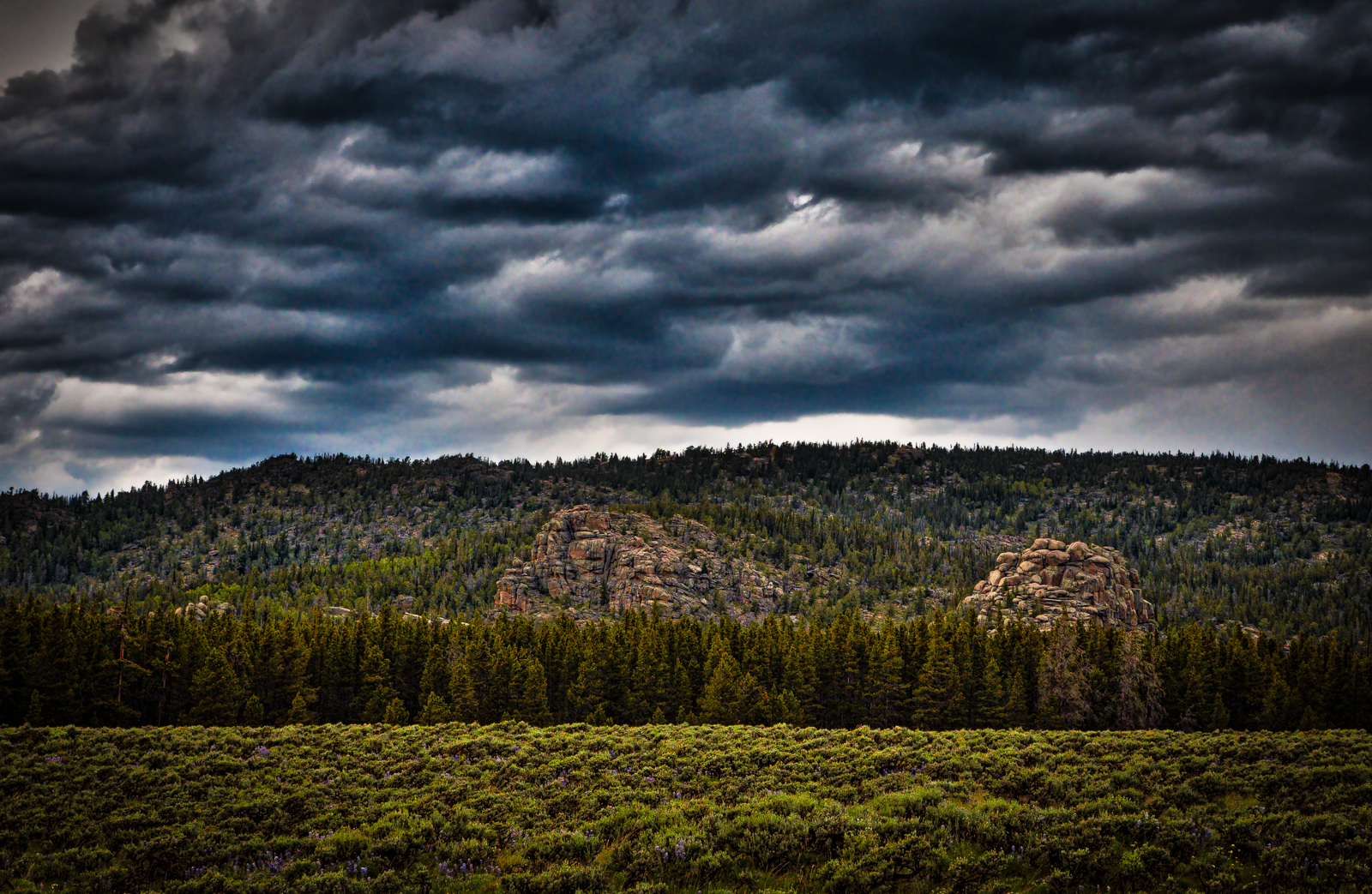
.jpg)
.jpg)
.jpg)
.jpg)
.jpg)
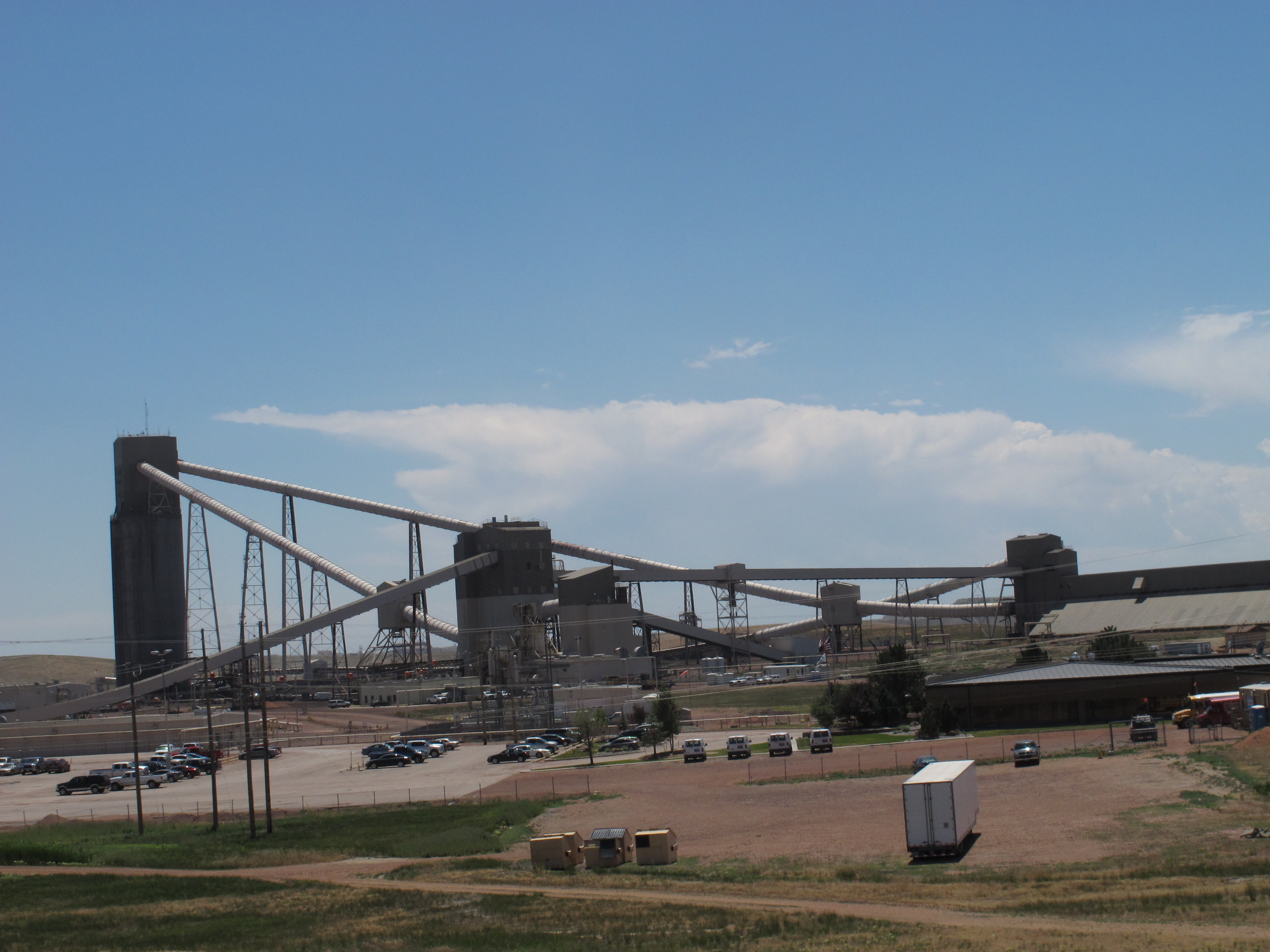

.jpg)
.jpg)
.jpg)
.jpg)
.jpg)
.jpg)
.jpg)
.jpg)
.jpg)
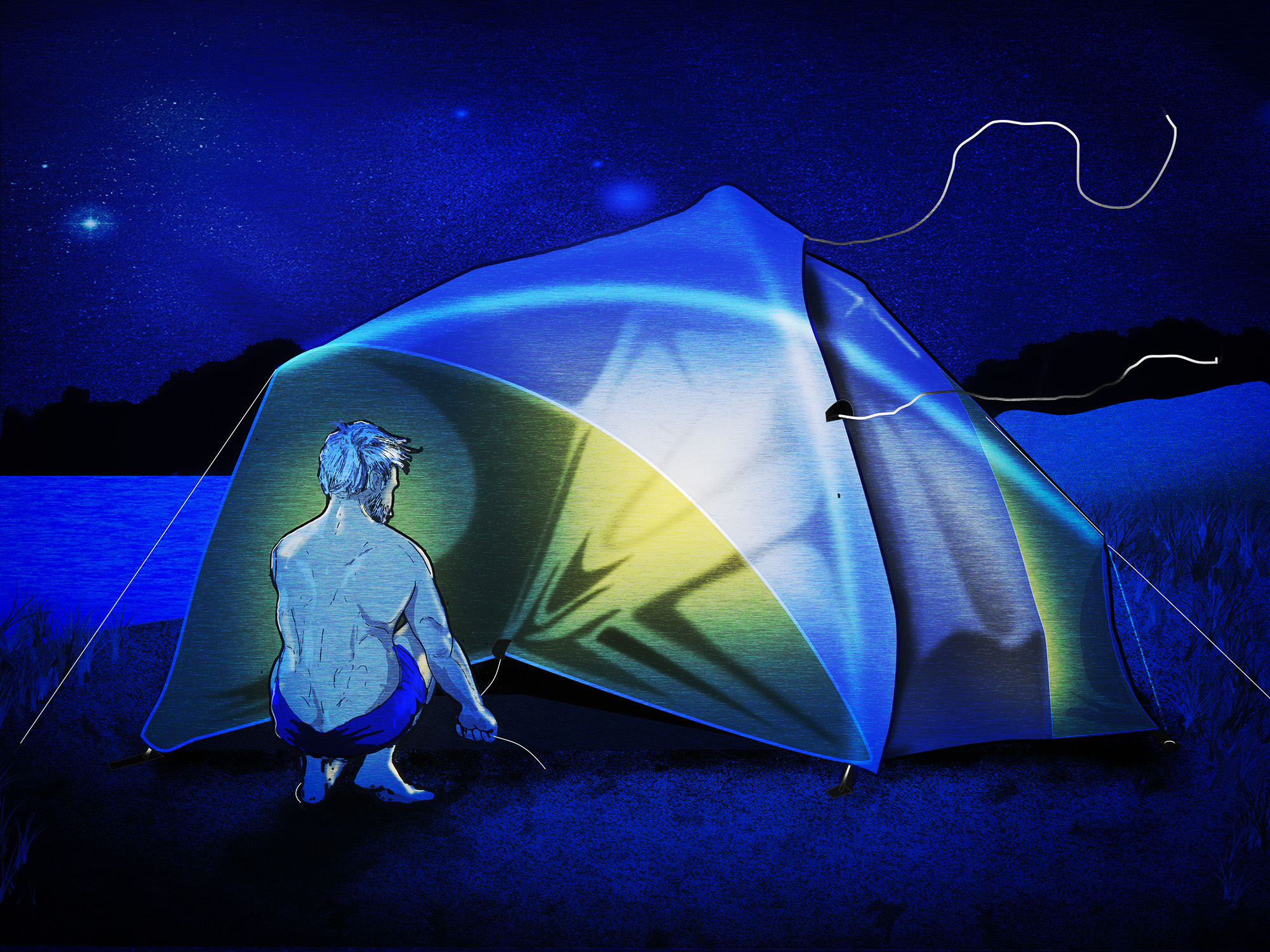

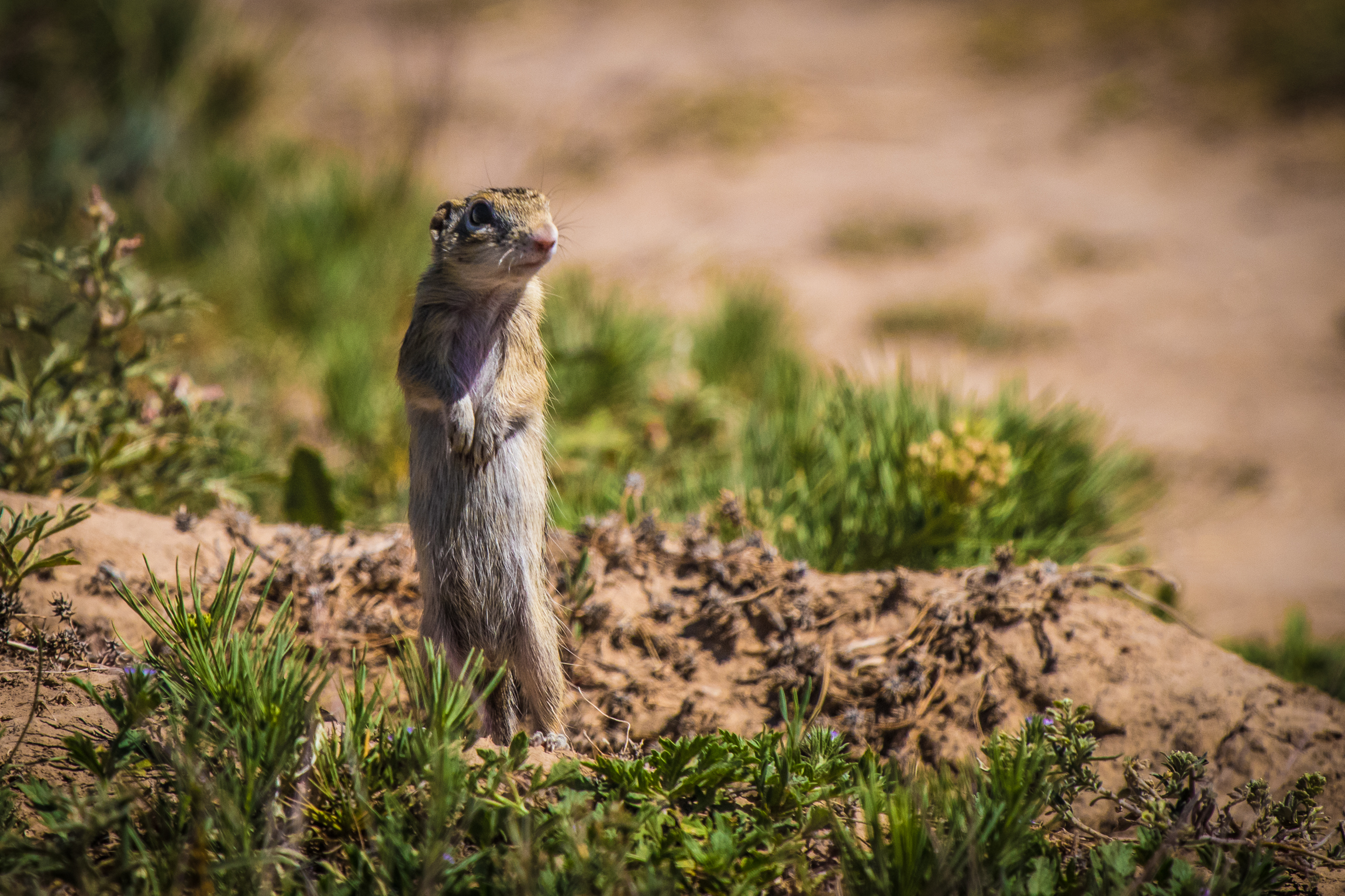
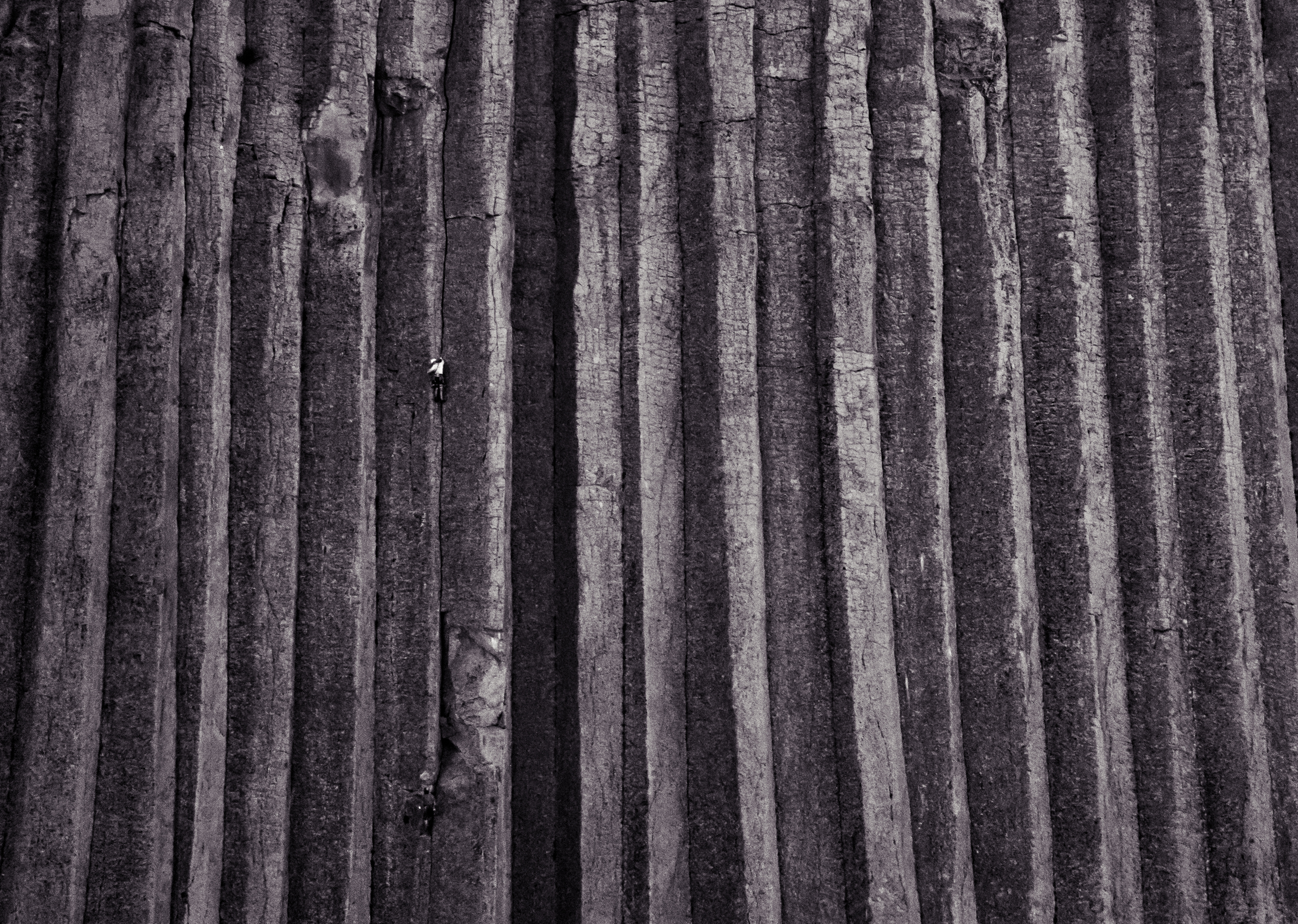
.jpg)
.jpg)
